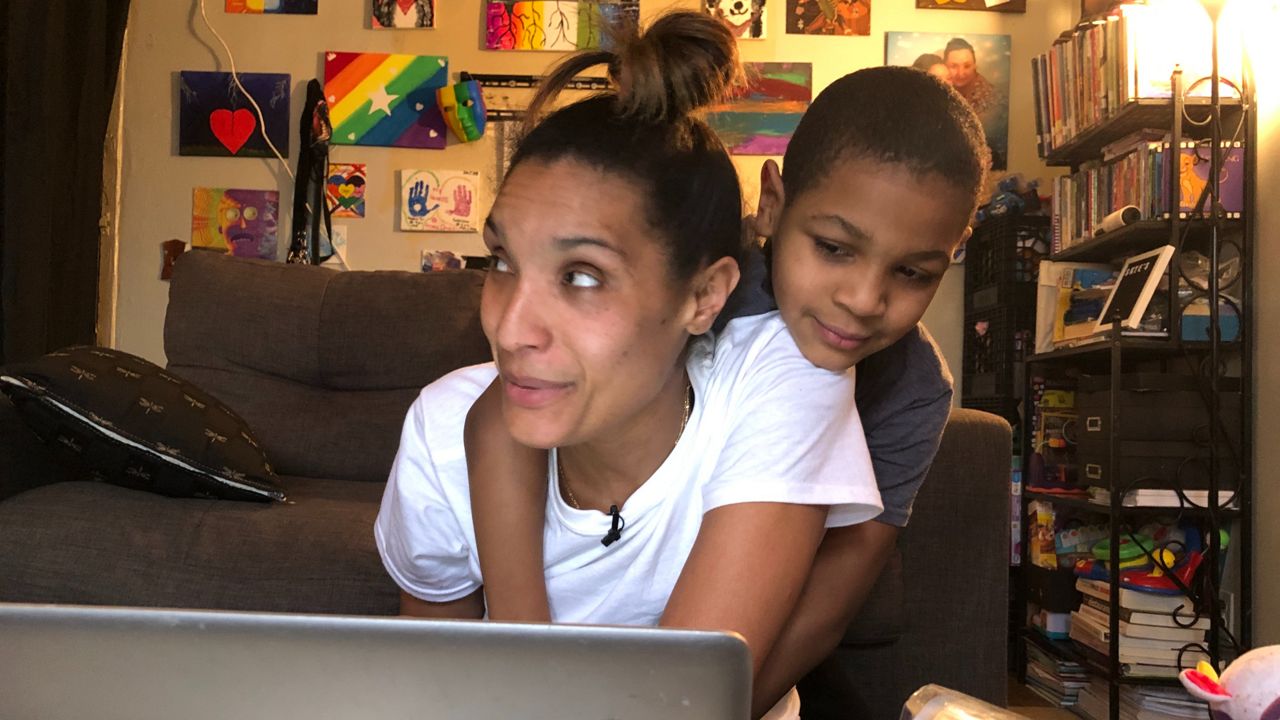LaNaisha L. Miles is a mom, a chef, a teacher, and a money manager.
"Right now I am taking the Ajax and dividing it into three,” she said. “On what somebody would spend a dollar on that dish soap. I now made that bottle of dish soap into three bottles of dish soap.”
She is all of this to her own three children. Her two siblings she took in when her mother passed away, and her fiancé’s child. Last year, she was working at an Amazon warehouse facility, about to give birth to her daughter Skylaah, when the pandemic hit, forcing her to choose between family and work.
What You Need To Know
- 2.3 million women have left the labor force since the start of the pandemic through January 2021
- Before the pandemic, women’s labor force participation rate had not been this low since 1988
- When the pandemic hit she realized she should not maintain a full-time job while also caring for six children
- She is an example of how the pandemic is taking a disproportionate toll on working women
"Jobs want a strict schedule. I can't guarantee a strict schedule right now, because my kids it is not a set schedule,” Miles said. “Today they are in school, tomorrow they are not. Then, tomorrow if I don't have a baby sitter and my fiancé is working, then I have to call out.”
Now, she’s out of work, but still doing the job of mom, teacher, cook and therapist to her family. Since leaving the workforce, she’s taking on as much as ever – without a paycheck.
“You know, I feel like I am so used to having it all together. And my kids are used to seeing that. They don't see mommy worried, or mommy concerned, mommy not smiling,” Miles explained. “I am a big kid. I am 31 years old, and sometimes I don't want to get out of the bed. Sometimes I don't want to be around my kids. Sometimes I don't want to cook.”
Miles is an example of how the pandemic is taking a disproportionate toll on working women. Disruptions to daycare, schools, and after-school programs leave them shouldering even more responsibilities. Labor statistics show that hundreds of thousands more women than men have left the workforce since the pandemic began.
"We are in the midst of a seismic shift in female representation in the work force that erupted due to COVID-19," said Christa Patrylak, who is a co-founder of the organization Know Our Work, which helps mothers looking to re-enter the workforce after they left to care for family during the pandemic.
"Millions of women, particularly women of color have left or not returned to the workforce and a significant reason for that is that woman are stepping up," said Patrylak.
The challenges could actually boost a resume. Patrylak says when re-entering the workforce, don’t apologize for the professional sacrifice you made for your family. That sacrifice is a measure of your character and your ability to embrace change - something businesses look for in future employees.
More information for mothers looking to re-enter the workforce can be found on KnowOurWork.com





_PKG_HHM_SI_Food_Pantry_CG_131164170_1286)
_Pkg_PU_EMT_CG)

_Pkg_APAHM_SI_Clean)